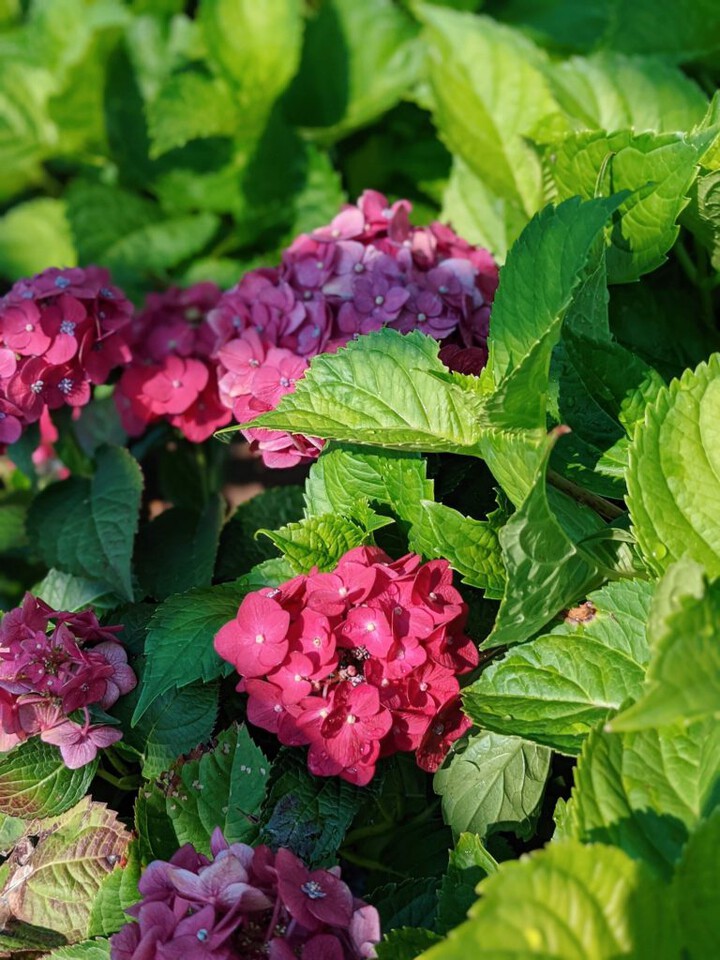Scientific Name: Hydrangea, hortensia
Common Name: Hydrangea
Common Species/Varieties: Tiny Tuff Stuff, Summer Crush, Seaside Serenade
Common Colors: Pink, Blue, Purple
Plant Type: Flowering Shrub
Annual or Perennial: Perennial
Hardiness Zone: 3-9 USDA
Self-Seeding: No
Bloom Season: Summer through Fall
Grows Best In: Part Shade
Fun Fact: Hydrangea has historically been referred to as “Change Rose” because of the way that the color of certain hydrangeas can be manipulated between shades of pink and blue.

Hydrangea can be… dramatic. They add a beautiful kind of drama to a garden landscape in the form of their big, softball sized flower clusters and their giant thick green foliage. They also behave dramatically in hot dry weather. While they do best in a humid climate, they can thrive in the drier climate in Colorado and surrounding areas when planted and cared for properly. Hydrangea will do best in our climate when planted in a place where it will receive bright morning sun, but be shaded from the intense afternoon sun. Hydrangea will need moderate watering, with more frequent watering until firmly established in their new home.
Hydrangea come in many different varieties, as well as different colors. Depending on the variety, your hydrangea may be anywhere from three feet to fifteen feet tall!
Hydrangea colors are truly stunning. Limelight Hydrangea blooms start out the same green as its foliage, then unfold into a minty white. Zinfin Doll Hydrangea has a white flower that looks like it has been flecked with pink paint. And some Hydrangea flowers, the flowers of the Hydrangea macrophylla plants, give you the option to change their color based on the pH of the soil. The trick lies in manipulating the amount of aluminum in the soil. Add lime, and your flowers will be more pink. To move them toward blue, add some aluminum sulfate. Play with the mixture to achieve the color you want – you can even meet in the middle with purple!

Like the changeability of their color, the meaning of hydrangea have changed over the years. They have been known to represent both pride and gratitude. They have even been rumored to keep someone from marrying if a hydrangea plant is installed outside a bedroom window. Hydrangea is poisonous and should never be ingested in any form. It contains low levels of cyanide and can be very dangerous. Keep it out of the reach of little hands and hungry furry friends’ mouths. When using hydrangea as a cut flower in an arrangement, cut the stem lengthwise in half, and then each section in half again. These are very thirsty flowers and they need as much absorbent area as possible! You can try waking up an over-thirsty cut hydrangea bunch by dunking the entire thing in ice water.